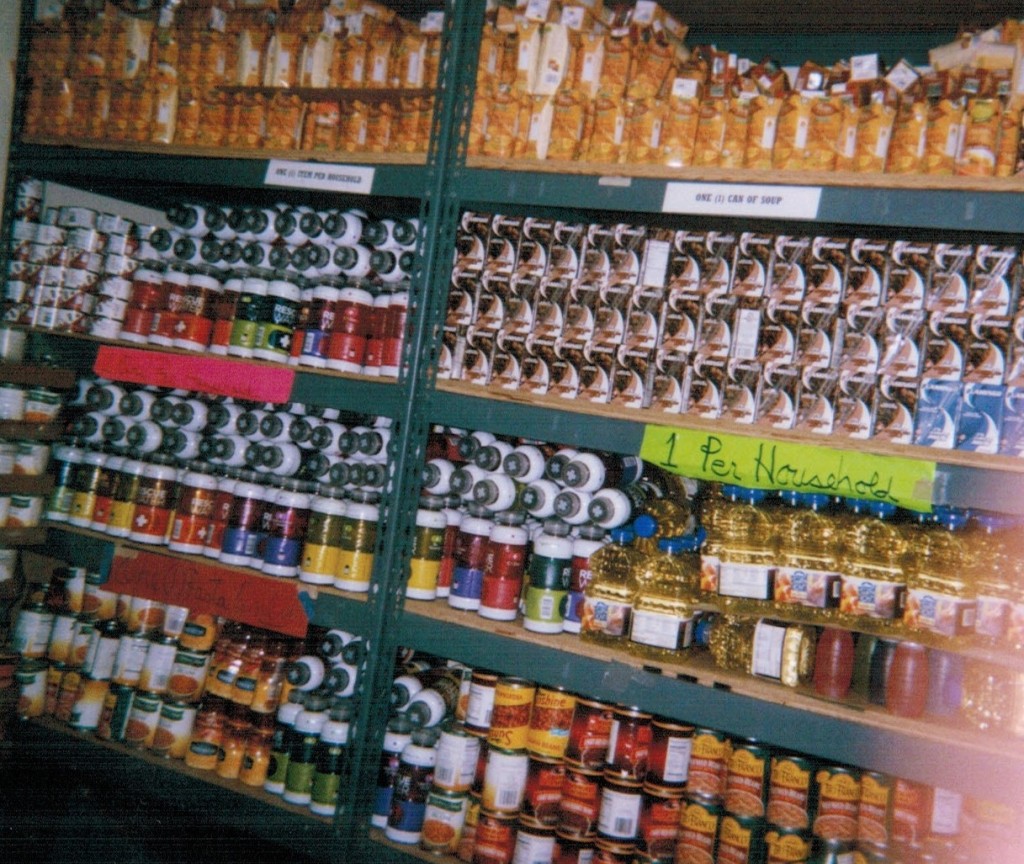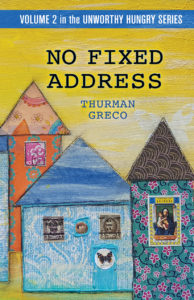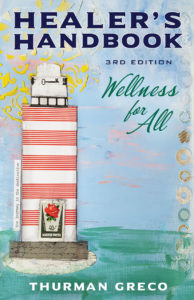The Big 3: We get less, pay more, and do without.
WHAT GROCERIES CAN YOU BUY FOR $16?
(The Minium SNAP Allotment)
Prices from Kingston Walmart
– 1 dozen eggs – $1.98
– 1/2 gallon milk – $1.94
– 1 lb. pinto beans – $1.28
– 1 lb. rice – $ .84
– 1 lb. onions – $ .99
– 1 can diced tomatoes – $ .79
– 1 lb ground turkey – $2.98
– 1 can corn – $ .77
– 1 lb. potatoes – $2.97
– 1 can tuna – $ .78
Total = $15.32
I first met Pat last fall when she came to the Reservoir Food Pantry the first time. She’s an older woman, a widow. Her husband died just over a year ago She’s still making her way toward her new life.
“I never dreamed it would be so hard…being alone like this. I didn’t tell my children that I came here. I don’t want them to know the situation.”
While she spoke, she wiped an occasional tear. She moved through the pantry line composed of a group of women, all about her own age. They chose corn, apples, squash, late season greens, onions, potatoes. As the line snaked forward, she turned her attention to the canned goods: beans, soup, fruits, veggies.
Pat hasn’t visited the SNAP (food stamp) office in Kingston yet. For one thing, it’s a good half hour down Route 28. For another, she’s afraid:
the forms,
the humiliation of being unable to survive on her own,
the long wait in a building that she may not even be able to find. And, finally, she’s afraid of the whole process which she finds threatening.
Her financial situation isn’t so far from all the other women in the pantry line. Grocery shopping for the elderly is difficult under the best circumstances. Getting to the grocery store can be challenging for order people – getting around in the parking lot and going up and down the grocery store aisles is no fun anymore. Then, when they can’t find what they need at a price they can afford, they have to maneuver the muddy parking lot and the scary entrance ramp at our pantry.
We haven’t even discussed the packages yet. They’ve got to be gotten home and in the house wherever and whatever that is.
Finally, finding affordable high quality food becomes more difficult as the days go by. As difficult as it is for Pat, she’s one of the lucky ones. Her automobile works.
The combination of a nonworking automobile, bad weather, insufficient $$$ is the makings of a disaster for a senior.
I keep telling everyone who will listen that seniors should get their SNAP card, a list of nearby pantries, and their Medicare card at the same time. So far, nobody has heard.
“Of course not.” I tell myself. “Why should they? We’ve all got gray hair.”
Seniors struggle with the Big 3:
food
housing
medical expenses.
Forget the frills like Kleenex and clothes. As seniors, we get less, pay more, and go without. We decide whether to heat or eat.
Healthcare costs can be devastating, even to a senior on medicare. Once a person comes down with cancer or other major disease, the pocketbook empties pretty fast.
There is a real pressure to feed the rising tide of hungry at every pantry. We receive questionnaires periodically from different agencies wanting to know how often we run out of food. How does “weekly” sound?
The Big 3 for pantries include:
high unemployment,
widespread hunger
deep cuts in social spending programs.
Every pantry is different. Some feed anyone who needs food.
Others are arbitrary and biased when it comes to deciding who can or cannot receive food.
Yet others require paper work which cuts eliminates the homeless entirely.
There are too many agencies with too many people standing in line for too little food. No Food Bank office can oversee or supervise the selection process.
At Reservoir Food Pantry, we serve a 3-day-supply of food with a large dash of dignity to all who come.
The lines and crowds outside pantries can easily convince any onlookers that our nation has a food problem.
Thank you for reading this blog/book.
Please share this article with your preferred social media network.
I hope you found this article helpful. Please leave your comments below and check out our other posts.
Don’t forget to join the email list.
Peace and food for all.
Thurman Greco
“Are you closing?”
 The call came out of the blue. A pantry management person I never, ever hear from called: “Are you closing your pantry? I heard this and I’m not the kind of person to spread gossip, so I’m asking you personally.”
The call came out of the blue. A pantry management person I never, ever hear from called: “Are you closing your pantry? I heard this and I’m not the kind of person to spread gossip, so I’m asking you personally.”
“No. No, the Reservoir Food Pantry is not planning to close” I replied. Actually, I’ve been having people call me for almost a year asking if we’re closing. I always ask everyone who approaches me: ” Who did you hear this from?”
“I don’t remember, Thurman.”
“Well, I sure wish I could get someone to spill the beans because I’d love to call that person up and find out what started this whole rumor.”
If I’ve had this conversation once, I’ve had it a dozen times over the past few months. So, here for all the world to read, is the bald truth. The Reservoir Food Pantry is not closing. Actually, we’re growing like a weed.
Every Monday morning Prasida and Francine go to Latham and return with all the produce they can haul back in our long line van. They, Bob Overton, Garrett O’Dell, and Susanne Traub put it out on tables and serve it to the shoppers. By 4:00, there is usually none left. Fruits, vegetables, pies, cakes, meat, fish, yogurt, eggs, …it’s all gone.
We serve about 100 families every Monday afternoon at 2:00. On Tuesdays and Fridays we deliver food to another approximate 50 home bound households.
We have an annual mailing in which we ask the community to support us financially in our efforts.
We are at the entrances of the Kingston Walmart one weekend every month asking shoppers to help us feed the hungry.
Every other month we are at the entrance to the Boiceville IGA on a Saturday as well.
We recently opened a Capital Building account at the bank.
We are actively involved in disaster preparation activities.
The volunteers of the Reservoir Food Pantry are a group of committed individuals focused on feeding the hungry as a way of celebrating the amazing abundance which is available in our country. Only in the good old U S of A could there be this much food available…just for bringing to pantries.
We are:
your tax dollars at work.
an environmental effort as we intercept food bound for the landfill and bring it to the pantry for distribution.
working together to feed the hungry.
looking for a larger space that is located above the flood plain.
extremely grateful for the opportunity we have to feed the hungry in the Ashokan Reservoir area.
It is an honor and a pleasure for us to be in Boiceville in the little red shed behind Robert’s Auction.
Thanks for reading this blog.
Please refer this article to your preferred social media network.
I hope you found this article helpful. Please leave your comments below and check out other blog posts.
www.reflexologyforthespirit.com
www.goodmorningwoodstock.com
www.sugarsecurity.com
my.Benefits.ny.gov
Don’t forget to join the email list.
Peace and food for all.
Thurman Greco
7 Ways We Use Food Pantries
Food Pantries feed the hungry…and very successfully at that, actually. After all, there are very few stories right now about starving people dying in the streets. We Food Pantry volunteers can pat ourselves on the back for that, at least.
But, so much more happens in a Food Pantry beyond feeding the hungry.
For starters, thousands of volunteers are kept gainfully occupied and off the streets as we (wo)man the pantries.
The United States Department of Agriculture disposes of thousands and thousands of pounds of surplus foods every year in Food Pantries. Unfortunately, though, the USDA seems to have a somewhat embarrassed attitude about the distribution of agricultural surpluses. Anybody who thinks about it quickly realizes that it’s impossible to grow just exactly what we need every year. It’s much better to have too much than too little. So, the USDA needs the Food Pantries to dispose of this surplus. Sure beats hauling it off to the landfill.
Thank you USDA! I just wish you felt better about the job you do.
Supermarkets use Food Pantries to dispose of food they can’t sell. By donating produce,
baked goods,
meats,
packaged shelf staples,
grocers avoid dump fees, discourage dumpster divers, accrue tax savings, and tell the world about how many thousands of dollars they donated to feed the hungry.
Churches throughout this country feed the hungry in Food Pantries located in their basements. That is, all except for the famous St. Gregory’s Episcopal Church in San Francisco where Sara Miles put the pantry on the altar. She subsequently wrote a book about it entitled “Take This Bread”. I hope you get a chance to read it.
Congregations label their Food Pantries as outreach but I don’t buy into that concept. What we’re all doing, really, is celebrating the enormous abundance existing in this country…in this world…on this planet.
Environmentalists use Food Pantries to divert food bound for the landfill. It’s amazing when you think about it. Several million people in our country are prevented from starving to death when they shop at a Food Pantry and take home produce, dairy products, meats, baked goods, shelf staples that would otherwise have ended up at the landfill.
Schools throughout our fair nation distribute food to children to take home on the weekend. The Backpack Programs offer food to children who have none in their households.
It’s a real ego trip for whole segments of our society. Everyone feels all warm and fuzzy about food donated to Food Banks. This includes farmers, grocers, food manufacturers, restaurants, bakers, religious and civic institutions feeding the hungry, and, of course, the people who read the stories about the generosity of these businesses.
This warm and fuzzy feeling we all get when we realize which businesses are contributing to feeding the hungry rubs off positively on Food Banks. They, thankfully, are very influential charities as a result. Food Banks rank right up there with hospitals, the United Way, and the Y.
And, it’s all good. Food Banks need the $$$ to keep the whole industry going. The demand for the food keeps growing and growing because the minimum wage jobs don’t pay enough $$$ to allow workers to buy groceries. SNAP benefits get whittled away each year. There’s not much left except the Food Pantry.
Thank you for reading this blog/book.
Please send a comment.
Please refer this article to your preferred social media network.
Don’t forget to join the email list.
http://teamnutrition.usda.gov
www.feedingamerica.org/officialsite
www.reservoirfoodpantry.org
Thurman Greco
9 Ways You Can Support the Reservoir Food Pantry
We’re committed to feeding the hungry with dignity. We are committed to offering the hungry a safe haven while they shop for pantry food. At the Reservoir Food Pantry we feel a connection to all who pass through our doors. This is our way of offering peace and harmony to our community. And, your support is critical to our mission.
The need in our area is great. The pantry has been steadily growing since the day it opened in September, 2013. We are now the 9th largest pantry in Ulster County and our pantry is continuing to grow.
We cannot do this job alone. We need your help so we can help others.
SEND THE RESERVOIR FOOD PANTRY A FINANCIAL GIFT. Prasida and Francine drive to Latham every Monday morning and return to the pantry by 1:00 p.m. with a van filled with fresh produce. We need your financial support in order to keep the pantry running. Your contributions are tax deductible.
CONSIDER A MONTHLY SUSTAINING DONATION. A monthly check, or paypal payment in any amount will insure that we have a regular cash flow to meet our expenses.
PAY A PARTICULAR EXPENSE. Choose an amount, and send it to the food pantry to help pay for a specific expense. For example, $20 donated monthly to help pay the dumpster fees would be a wonderful gift for us.
SEND A GIFT CARD TO THE RESERVOIR FOOD PANTRY. If writing a check is more effort than you are comfortable with, send us a gift card. If you send us a gas gift card, or a Visa gift card, we can use the card to help meet our expenses. A CVS, Target, or Walmart gift card can be used for toilet paper.
HELP PAY FOR TOILET PAPER. Toilet paper is an item that many people have trouble buying because they lack the money. When you send us money monthly to apply to our toilet paper account, we’ll be able to purchase more toilet paper each month. We estimate that we need 200 rolls of toilet paper every week.
GIVE A DONATION IN HONOR OF A FRIEND OR FAMILY MEMBER.
When you make a contribution as a gift to a friend or family member, we’ll send the honoree a personalized card acknowledging your donation. Send us the name and address of the honoree, along with your tax-deductible donation.
GIVE A GIFT TO THE RESERVOIR FOOD PANTRY: Gifts of peanut butter and jelly are important to the pantry. When you donate food to the pantry, it’s passed on to needy shoppers. We continually experience severe shortages of peanut butter. We need office supplies: pens, paper, envelopes, tablets, notebooks. Extra produce from your garden is needed. We always need fresh produce to distribute to the hungry.
FORWARD THIS APPEAL TO A FRIEND. Please share our story with your friends and neighbors.
KIND WISHES, PRAYERS, AND LOVING SUPPORT ARE ALWAYS WELCOME. Your positive attitude toward us is extremely important and cannot be overestimated.
Thank you for your support of Reservoir Food Pantry. You are important to us. We send blessings to you as we feed the many hungry in the area.
Reservoir Food Pantry is a 501(c)3 nonprofit corporation. Your gift is tax deductible.
Please send it to Reservoir Food Pantry – P.O.Box 245 – Boiceville, NY 12412
Thank you in advance for your generosity.
Thank you for reading this blog/book.
Please refer this article to your preferred social media network.
Please send a comment.
Don’t forget to join the email list.
Peace and food for all.
Thurman Greco
8 Ways the Hungry Get Food.
Betty and her daughter are Woodstock born. They’ve shopped there regularly since the Good Neighbor Food Pantry opened and began feeding the hungry.
For years, they shopped at the pantry, CVS, Rite Aid, and Woodstock Meats between periodic trips to Walmart in Kingston. Then, several years ago, Betty’s husband died and trips to Walmart ceased to be part of the routine. It became a luxury for them when a relative invited them to ride along to Kingston to shop.
Finally, he died too, and now Betty and her daughter have no transportation to Kingston. They’re eating out of the pantry and CVS.
The combination of limited income, no access to affordable grocery stores, and no automobile makes life difficult for the 2 women. Although she probably qualifies, Betty has never gotten SNAP.
There are many people in a situation similar to Betty and her daughter. People in Betty’s situation learn to cope with lack of access to food and the complications created by a limited budget and no automobile. They
get SNAP if they can.
dumpster dive.
shoplift.
ask friends and relatives for food.
borrow $$$ for food from friends and relatives.
visit a friend or relative at mealtime.
go to the soup kitchen.
shop at a pantry.
Betty is a single senior living with an adult daughter. Life is a bit more complicated with young children in the household when there’s not enough food and no $$$. Households develop coping mechanisms to deal with the situation.
One such technique consists of simply serving less food.
Another consists of just skipping meals.
A third is to feed children what is available and adults go without.
But, whether the household has adult children, younger children, or no children at all, hunger is a reality for people in this situation. They are classified as either being at risk of hunger, or experiencing hunger depending on the severity of the situation.
Whatever the classification, one thing is certain:
People in this situation are intimately connected to hunger on a daily basis.
They are also a good example of the reality that in this country we have 2 food systems:
one for the poor and
one for everyone else.
Thank you for reading this book/blog.
Please send a comment.
Please refer this article to your preferred social media network.
Don’t forget to join the email list.
Peace and food for all.
Thurman Greco
Can we break down the barriers?
 Starving seniors? Is that too harsh a term?
Starving seniors? Is that too harsh a term?
Let’s ratchet it down: hungry
Or maybe: food insecure. Yeah, that’s better. It sounds better anyway.
Call it what you want, the event is the same. It’s your grandmother or grandfather (for me…I’m certainly a grandmother) caught in a situation where there’s simply not enough food in the house.
MANY OF OUR OLDER RELATIVES QUIETLY CHOOSE BETWEEN BUYING MEDICATIONS OR PUTTING FOOD ON THE TABLE.
The issues with seniors and food insecurity are serious because when seniors no longer have the $$$ to buy the food they need for proper nutrition or when they can no longer pay for the medications they need, they become ill and finally end up being taken care of by their children or they end up in a nursing home.
I know stories about:
The older Woodstock woman living on mashed potatoes.
The woman who ended up in a nursing home when she was cut off from her take out food and didn’t have the resources or physical ability to get to a grocery store.
The older man who lacks funds for enough food and is slowly starving to death.
THERE IS FOOD AVAILABLE FOR SENIORS:
IF they can get to a pantry or connect with a pantry offering take out
IF they will sign up for SNAP (food stamps).
I was recently speaking with a retired man I know:
“Richard, do you get SNAP?”
“No.”
“Why, Richard? SNAP is usually easy to get. All you have to do is apply.”
“Well, I’m getting by alright without it. Let someone else, needier than me, get the $$$.”
“Richard, think about getting SNAP. This is a benefit you paid for. This $$$ is waiting on the table for you. You’re not the kind of guy who leaves $$$ on the table.”
I HAVEN’T CONVINCED HIM YET. However, we’re not through negotiating. As seniors, we’re in a situation where every little bit helps.
THE BARRIERS SENIORS PUT UP TO SNAP ARE GREAT. Seniors resist going to a pantry, soup kitchen, getting SNAP until they simply cannot resist any longer. I know the feeling. We grew up as children and went into adulthood feeling that if we worked hard and paid our taxes, we would end up okay. We worked all our lives with this event in sight and now that we’re here…there simply isn’t enough.
With this event comes the feeling of inadequacy and the self blame. “I must have done something wrong. Here I am living hand-to-mouth. I don’t even have enough $$$ for food. What did I do wrong?”
THERE’S SOMETHING WRONG WHEN A WHOLE GENERATION OF PEOPLE BEGIN BLAMING THEMSELVES. We’re really not totally to blame. The rules have changed. Because we’re retired, we’re not in the rules making game anymore. Retirees by their very nature are disempowered. Whatever happened to the Gray Panthers?
FOOD INSECURITY AMONG SENIORS IS AN EPIDEMIC. People work on both a state and national level to make SNAP more available to seniors. The least we can do is get a card and use it.
Thanks for reading this blog/book.
Please send a comment.
Please refer this article to your preferred social media network.
Don’t forget to join the mailing list.
Peace and food for all.
Thurman Greco
JSY…What’s that? Nutritionist Education!

Although we see her only once a month, everyone knows when she’s coming and they gather in the Community Room at Woodstock Commons early to be sure a get a good spot for her presentation. Amy is one of the pantry’s favorite people.
So, who is Amy Robillard and what makes her so fancy anyway?
Amy is the Just Say Yes nutritionist from the Food Bank of the Hudson Valley of New York State.
Food pantries, soup kitchens, and emergency shelters, through the Food Bank of the Hudson Valley offers nutritionist education, a service to our shoppers: a nutritionist who gives talks along with cooking demonstrations to the shoppers.
Although some people feel like this is a luxury that poverty stricken people shouldn’t have, I feel strongly that the food pantry nutritionist education is a necessity, not a luxury. Amy gives classes in cooking and serving fruits and vegetables. Very often the shoppers in the pantry line take home foods that they’ve never seen before, do not know the name of, and have no idea how to prepare and eat.
Amy teaches simple and affordable ways to eat more fruits and vegetables. She makes learning about nutrition and food safety both fun and easy to understand. Amy has a series of 11 different lessons that she shares over the course of a year. During this time, she will share over 100 different recipes which are low cost, easy to prepare, and delicious.
With Amy’s information, nutritionist education, and encouraging attitude, the shoppers take new foods home with them each week which they feed to their families. This is an important part of the pantry shopping experience.
Often, the new shopper has lived on less than 10 foods for his/her entire life. It is not unheard of to speak to people who have lived on beans, bread, and greens their entire lives.
To visit with a shopper after a year of shopping in the pantry is to interact with a totally new person. The experienced pantry shopper knows much about foods:
their nutritional value
their origin
how to prepare them.
We begin to notice changes in a pantry shopper within 6 weeks of the first visit. The very first changes we see are a straighter back, a more confident walk, clearer skin, smiles. People look better, walk better, and interact better socially when they are no longer afraid of living with hunger.
Amy helps facilitate this. She teaches them how to cook with pantry food. She makes them feel at ease at the pantry. She normalizes a hidden, stressful experience as she removes the negativity. .
I wish all pantries had a nutritionist on board.
Reservoir Food Pantry is happy to have Amy come visit whenever she can. We’re grateful to be on her schedule.
Thanks for reading this blog/book.
Please refer this article to your preferred social media network.
I hope you found this article helpful. Please leave your comments below and check out the other posts.
Don’t forget to join our email list.
Peace and food for all.
Thurman Greco
The Freezers Came This Week!

The freezers came this week! These beauties are 20 cu. ft. upright Frigidaires brought over by Snyder’s. We feel very special here at the Reservoir Food Pantry because they will change life in the pantry as we have known it in the past.
EVERY ADDITION TO THE PANTRY CHANGES LIFE HERE DRAMATICALLY BECAUSE WE’RE SUCH A NEW PANTRY. There’s so much going on over here that I have trouble keeping up.
Since September, 2013, we’ve gone from a homeless pantry whose volunteers delivered food to homeless and home bound people. In the first few weeks we were open, over 40 households found us.
Then, we landed a spot outside the Waste Water Treatment Plant, put up a tent, and served the hungry. I vividly remember the Monday afternoon we served 18 households. “Don’t worry” I told everyone. “In no time at all, we’ll be serving 25.” A couple of people looked at me with expressions of total disbelief.
Yesterday we served over 90 households in the pantry shed.
Two weeks ago we got the dumpster.
So now we’ve got
a shed,
a long line van,
a produce room,
freezers,
refrigerators
a dumpster,
a website,
a facebook page,
a free bookstore compliments of Lisa Libraries,
the best volunteers in the world.
We’ve got other things too but I have trouble keeping up.
iT FEELS LIKE WE’RE BEING HURTLED THROUGH TIME SO FAST THAT ALL OF US ARE JUST BARELY HANGING ON.
Only last week I learned that we’re ranked the 9th largest pantry in Ulster County.
“Is that true?” I thought. We’ve only been open a very short time. How did this happen?
But, back to the refrigerators:
We got them because of a collaborative grant request effort of several area pantries under the direction of Michael Berg at Family and Beth McLendon of UlsterCorp.
But, this isn’t the end of the story. It’s more like the beginning of the story…even though the beginning goes back to about 2007 or so when a HPNAP (Hunger Prevention Nutrition Assistance Program) directive offering preference to refrigerator and freezer requests in pantries in our annual HPNAP grant requests.
HPNAP wants us to use freezers and refrigerators because fresh/frozen food is more nutritious than canned. And, when HPNAP wants something, they usually follow through with funds.
Our little Reservoir Food Pantry in Boiceville routinely offers the absolute best, most nutritious, most delicious food possible for our shoppers…thanks to the freezers which go with our refrigerators. Hungry people shopping at our pantry eat fewer and fewer canned foods, many of which are heavy on salt, and dented.
Instead, hungry people shopping at our pantry choose cheese, yogurt, frozen veggies, fruits, meats. They also choose fresh fruits and vegetables brought down weekly by Prasida and Francine from Latham in our lovely long line van.
They take home eggs, milk, butter, and other refrigerated/frozen foods.
With the freezers and refrigerators, our take out packers don’t worry about running out of canned food. Instead, they go to one of the freezers and choose from the selection there.
This is your tax dollars at work. I say “Let’s all vote a raise for the HPNAP people!”
Thanks for reading this blog/book.
Please refer this article to your preferred social media network.
I hope you found this post helpful. Please leave your comments below and check out our other posts.
Don’t forget to join our email list.
Peace and food for all.
Thurman Greco
Walmart and the Minimum Wage

As the country’s largest employer, Walmart gets criticized for many “wrongs” not exclusive to itself.
Although retailers throughout our country only pay minimum wages, people act like Walmart is the only one. They pretend the other retailers pay over $10 per hour and include wonderful benefits like health care and retirement.
Wrong!
Most retailers pay what Walmart pays – maybe even a little less. In our own Woodstock area, retailers not only pay less, they often pay their sales employees off the books.
So, the recent news of Walmart and the minimum wage hourly rate increases to $9 per hour is an excuse to celebrate, if nothing else. Walmart is a trendsetter! Hopefully this move will motivate other retailers to do the same.
Those of us who work in pantries fantasize we’ll have fewer people in our lines. In some locales, I’m sure that may be true.
However, I harbor no fantasies. For one thing, the people in our pantry line are mostly senior citizens too old to work. For another, those young enough to hold down jobs work for companies who aren’t going to raise the wages.
Over the past few decades, we’ve created a food system for the poor. The more affluent in our country shop in super markets. Everyone else shops at the convenience store, pharmacy grocery aisle, the food pantry.
Because of the situation created in recent years by food deserts, the underemployed or unemployed poor struggle to get enough food to eat while also trying to get the right kinds of nutritious foods needed to stay healthy.
Over the years, food manufacturers, farmers, grocers, corporations, foundations, individuals, and the government work together to provide surplus food to feed those in need.
The goal: give food assistance to the hungry.
Since 2006, the need for emergency food has morphed into an ongoing need for food for people from all walks of life.
The new paradigm is to feed them nutritious food regularly because these people can no longer buy the food to feed themselves.
Many find themselves in this position for the first time in their lives. There are now men, women, and children needing assistance to alleviate hunger in every county in every state in the union, as well as the District of Columbia.
High unemployment/underemployment, increasing housing costs, rising poverty, the rising cost of fuel to heat apartments and homes, increasing transportation costs, and the escalating cost of food make emergency food assistance become supplemental food assistance.
Financial safety nets disappear as congress repeatedly cuts benefits.
Today’s pervasive hunger undermines our communities, schools, work force, and national security.
When people don’t have enough food to eat today, it’s impossible to plan for tomorrow. People with enough to eat work better and learn better. They can build a better life for themselves and their families.
This is what Walmart raising the minimum wage is all about.
Raising the minimum wage a few cents or dollars is not about solving the problems of poverty. It’s about feeding the hungry.
Thank you Walmart, and every other employer in our country who pays workers a living wage. You are to be commended. Hopefully this will start a trend toward employers everywhere paying living wages to workers.
Thanks for reading this blog/book.
Please send this article to your preferred social media network.
I hope you found this article helpful. Please leave your comments below and check out our other posts.
Don’t forget to join the email list.
Peace and food for all.
Thurman Greco
Are You Afraid in the Pantry ?
“Are you ever afraid in the pantry?” the woman asked. She was at a talk I gave about hunger. “No.” I answered. “Never. Not in the pantry. The pantry is a safe haven.”
But, I did understand her question. It went much deeper than fear in the pantry. This woman was reaching out. We live in perilous times. ISIS, police, illness, hurricanes, rapists, purse snatchers, you name it. Danger appears to be everywhere around us.
Many, many people live in fear. Many of those are afraid to voice their fears.
When I write about specific health issues on my reflexology blog, fear is almost always a factor.
Well, there are things we can all do to cope. There’s no need to live a life feeling vulnerable.
For starters, we can protect ourselves. I practice several different forms of protection.
Prayer
Meditation
Visualizations
Preparation
Every Saturday morning, promptly at 9:30, I can be found entering the Fitness Connection in Kingston where I study self defense under trainer Paul LaCroix. I’m there for an hour each week learning finger jabs, wrist escapes, double wrist escapes, elbow smashes, kicks, bear hug escapes, and ground defense techniques. Paul teaches new things every week. Basically, he’s teaching me that my elbows and knees are weapons to be used in case of attack or assault……
Paul’s classes are a lot more fun than doing repetitions in a gym, that’s for sure. And, the added bonus is that I feel as if I’m prepared for an unknown assailant.
And, of course, I feel as if I’m going to be a bit of a surprise for anyone who thinks that as a 70+ year old cotton top, I’ll be an easy mark.
I’ll be blogging more in the future about self protection techniques. We all need these tools because it’s important to feel safe both physically and spiritually.
In the meantime, you’re invited to join Paul’s Saturday morning class. It’s ongoing and it’s adaptable to different age, strength, and skill level.
See you there!









